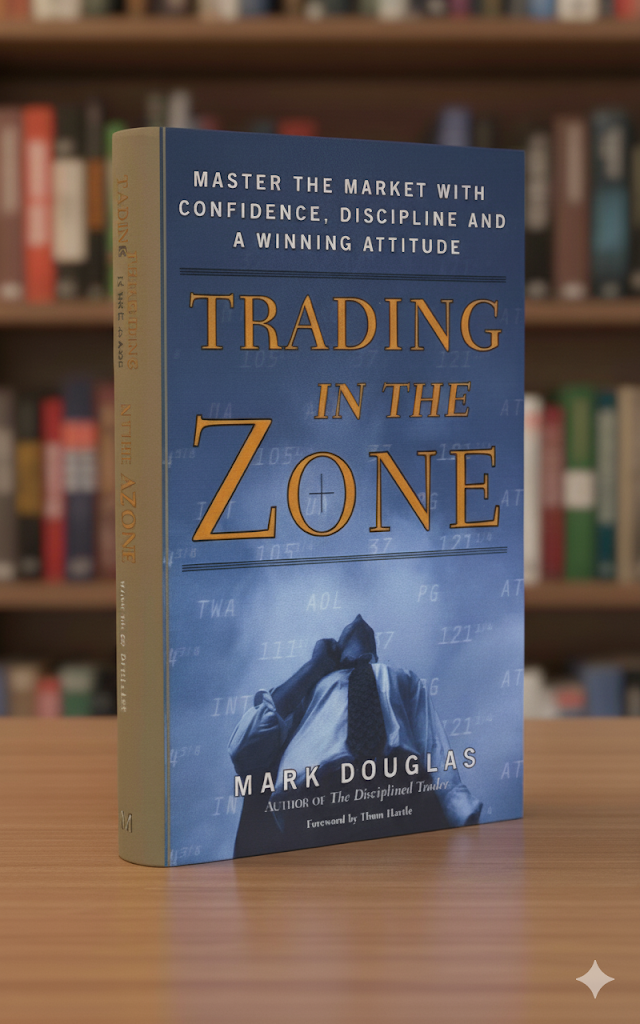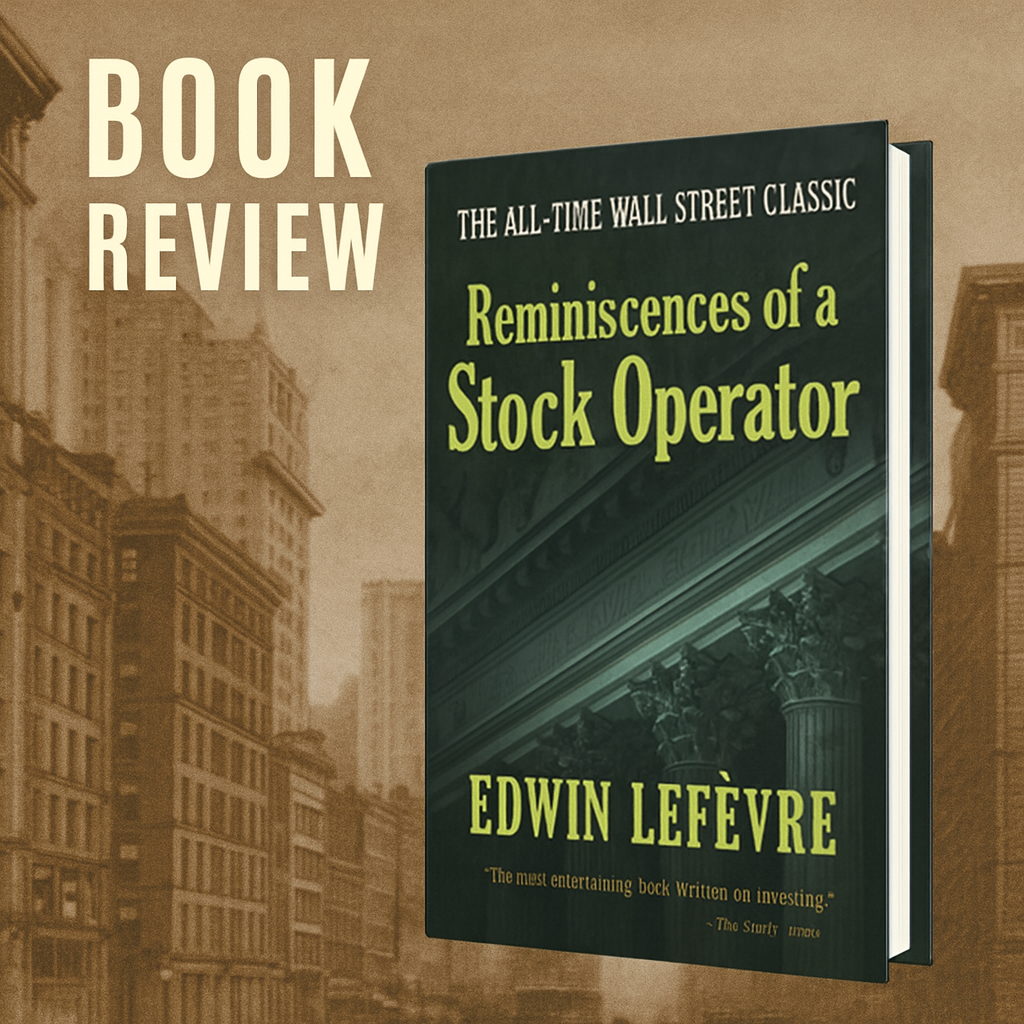Trading in the Zone review distills Douglas’s five truths, the casino mindset, and routines—pre-trade scripts, fixed risk, and journal reviews—so you trade calmly under uncertainty and let your edge play out over many trades. Get an actionable plan you can apply today with simple steps—learn how.
Mark Douglas’s Trading in the Zone is a staple of trading psychology. Its central claim is straightforward: markets are uncertain, but your behavior doesn’t have to be. Consistency comes less from prediction and more from managing your mindset, risk, and rules. In an age of fast feeds and flashing notifications, that idea feels even more urgent. Many new traders chase the “feeling” of a perfect setup and end up overtrading, cutting winners, or moving stops. Douglas pushes back with a quieter discipline: think in probabilities, accept uncertainty, and execute your plan without drama. It is a book about how to act when nothing is guaranteed—exactly the condition of modern markets.
Core Ideas: The book’s message in plain language
Douglas asks you to stop treating each trade as a referendum on your intelligence. A trade is only one event in a long series. You win some, you lose some, and the outcome of any single attempt says little about your skill. What matters is whether you have an “edge”—a repeatable setup that tends to work over many tries—and whether you can let that edge play out by taking all valid signals with controlled risk.
He frames the mindset shift with what he calls five fundamental truths. Anything can happen. You don’t need to know what will happen next to make money. Wins and losses appear in random order even when you have an edge. An edge is a probability, not a promise. Every trade is unique. Together these truths loosen the grip of perfectionism. The point is not to be right; the point is to be consistent.
Another key idea is neutrality. The market is not out to get you; it is simply moving as orders interact. We feel fear or anger because of the meaning we attach to a tick against us. When you remove that meaning—when you stop taking every wiggle personally—you can make cleaner decisions. The practical path is to replace untested beliefs (“I just know this will bounce”) with rules that are clear and small enough to follow under pressure.
Finally, Douglas insists on responsibility. You cannot control the news or the next print, but you can control the plan you trade, the size you choose, and the exits you accept. If you own those choices, you regain power. If you blame external forces, you hand your control to them. That attitude shift is the beginning of consistent execution.
Strengths: What the book gets right
The great strength of Trading in the Zone is clarity. Douglas avoids heavy math and opaque jargon. He speaks to the lived experience of a trader staring at a screen and debating whether to click. You won’t find dense statistics; you will find language you can remember in real time: “I don’t need to know what happens next to make money.” Those lines become guardrails when your heart rate jumps.
The book also offers a complete mental model that’s simple enough to use. Think like a casino: define your odds, size your risk, and let volume do the work. Casinos don’t need to predict the next hand of blackjack; they need to run many hands under firm rules. That metaphor is sticky. It changes the way you view streaks. A bad day feels less like doom and more like one tile in a mosaic.
Another plus is the relentless focus on execution. Plenty of books teach setups. Few squarely face the reasons people fail to take them—hesitation, fear of missing out, the need to “make it back,” or pride after a big win. Douglas writes as if he has sat beside you during your worst trades and taken notes. His guidance lands because it describes what you actually do when money is at stake.
The tone is practical. He encourages written rules, pre-trade self-talk, and post-trade reviews. Even when he sounds repetitive, the repetition works like training: you are rewiring how you relate to risk. And because the insights rest on human nature, they travel well across asset classes and platforms. Whether you trade stocks, futures, forex, or crypto, the psychology is the same.
Limitations: What to watch for
The book assumes you either have an edge or can build one. It won’t hand you entries, exits, or filters. Some beginners would prefer a starter system to test. Douglas stays in his lane—mindset—and leaves the technical scaffolding to you. Readers who expect step-by-step tactics may feel undersupplied.
At times the prose circles the same points. The concepts are important enough to bear repeating, but a few chapters could be tighter. Some examples carry an older, floor-trading flavor that may feel dated to the app era. None of this weakens the core message, but it can slow the read.
Finally, the discussion of risk is strong on attitude and light on math. If you want detail on position sizing methods—volatility targeting, Kelly fractions, correlation effects—you’ll need a companion text. Think of Douglas as your coach for discipline, not your quant for sizing.
Trader’s Takeaway: How to apply it tomorrow morning
Treat the book as an operating system for behavior. Start with a one-page plan. Write your edge in plain language. Specify the conditions that must be present to enter, the rule that gets you out if you’re wrong, and the way you’ll take profits if you’re right. Fix your risk per trade as a small slice of your account—small enough that a loss stings only a little. Pre-load your platform with bracket orders so stops and targets are part of the order ticket, not a decision you make after the candle turns red.
Before the session, read Douglas’s five truths out loud. This sounds corny; it works. The goal is to switch from “predict and be right” to “execute and be consistent.” While trading, judge yourself by process, not by ticks. Keep a simple journal split into two lines for each trade: Did you follow the plan? What was the result measured in R (risk units)? Celebrate a perfect process even on a losing outcome. That rewires your brain to value discipline, which in turn lets your edge play out over a proper sample.
Think in series, not singles. Commit to evaluating your plan after twenty or fifty trades, not after two. When emotions spike—after two quick losses, after a big winner—give yourself circuit breakers. Cap the daily loss. Limit the number of trades. If you hit the limit, stop. Walk. Come back when your thinking slows down. The best traders are not calmer because they were born that way; they are calmer because they built rails that keep them from jumping the track.
If you like experimentation, run small A/B tests. Change one rule and track fifty trades. Keep the winner and discard the loser. That approach turns Douglas’s philosophy into data you can trust. You are not hoping your beliefs are right; you are checking them against reality.
A simple metaphor holds it together: be the casino, not the gambler. The casino sets rules, limits risk, and lets time and volume do the lifting. The gambler chases certainty and mood. Your job is to move from the second camp to the first.
Who Should Read: Matching reader to book
New traders and curious beginners will benefit most. The book can prevent bad habits from cementing. Retail investors trying their first swing trades or day trades should read it before increasing size; it builds emotional shock absorbers. Finance students will find it a useful counterweight to classroom theory because it shows how decisions actually melt under heat. Experienced traders who have solid systems but spotty execution—the ones who move stops, add to losers, or bail early—will find a reset here. Long-term index investors may not need the day-to-day discipline, but the mindset helps in drawdowns and during scary headlines.
A step-by-step reading map
Start with the opening chapters to absorb the five truths and the acceptance of uncertainty. Move into the middle sections to surface your own beliefs about risk and being right; write down the ones that have cost you money and replace them with rules. Use the later chapters to build routines: a short pre-market checklist, a pre-trade script, a post-trade review, and a weekly lookback. When you finish the book, run a fixed-risk, fifty-trade trial of your plan. Judge the plan by the series, not by the first day’s P&L.
Where it fits in a full toolkit
Let Douglas supply the mindset. Pair it with a focused strategy resource that defines entries, exits, and filters for a single style—trend following, mean reversion, or breakouts. Add a risk text that offers position sizing frameworks and explains how volatility and correlation shape drawdowns. Round out your education with material on liquidity and market structure so you understand why price behaves differently around events or at certain times of day. This order—mindset, method, money—keeps you from applying perfect discipline to a weak strategy or a sound strategy with reckless sizing.
Verdict: Balanced recommendation and rating
Trading in the Zone earns its place on short lists for traders because it addresses the real fight—the one with yourself. It reminds you that uncertainty is permanent, that prediction is optional, and that consistency is a choice enforced by rules. The book will not give you a system. It will not do the math. It can repeat itself. Yet the voice is clear, the ideas are sticky, and the guidance converts directly into habits that change outcomes.
For beginners and for many frustrated strivers, this is a must-read. Combine it with a simple, testable edge and a small fixed risk per trade. Then let time and sample size do what they always do.









